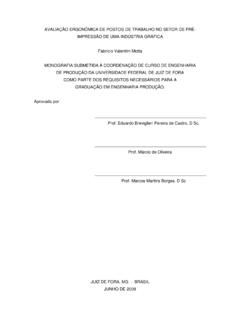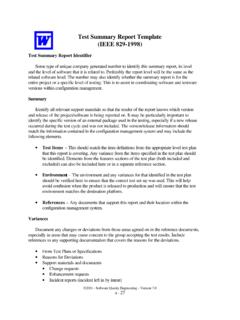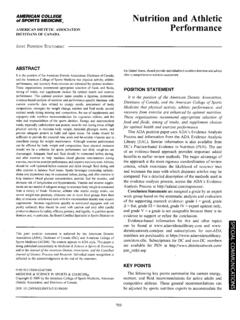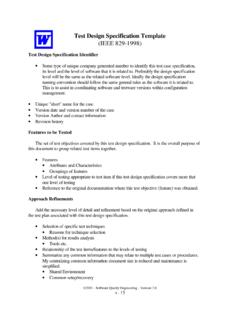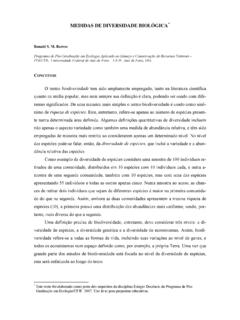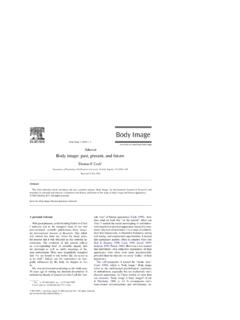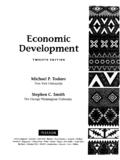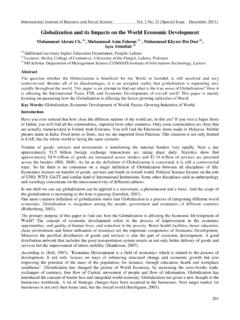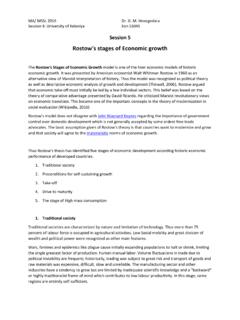Transcription of Author(s): W. W. Rostow Source: The Economic History ...
1 The Stages of Economic GrowthAuthor(s): W. W. RostowSource: The Economic History Review, New Series, Vol. 12, No. 1 (1959), pp. 1-16 Published by: Blackwell Publishing on behalf of the Economic History SocietyStable URL: : 16/11/2009 22:36 Your use of the JSTOR archive indicates your acceptance of JSTOR's Terms and Conditions of Use, available JSTOR's Terms and Conditions of Use provides, in part, that unlessyou have obtained prior permission, you may not download an entire issue of a journal or multiple copies of articles, and youmay use content in the JSTOR archive only for your personal, non-commercial contact the publisher regarding any further use of this work. Publisher contact information may be obtained copy of any part of a JSTOR transmission must contain the same copyright notice that appears on the screen or printedpage of such is a not-for-profit service that helps scholars, researchers, and students discover, use, and build upon a wide range ofcontent in a trusted digital archive.
2 We use information technology and tools to increase productivity and facilitate new formsof scholarship. For more information about JSTOR, please contact Publishing and Economic History Society are collaborating with JSTOR to digitize, preserve andextend access to The Economic History ECONOMI-C History REVIEW SECOND SERIES, VOL. XII, No. I 1959 THE STAGES OF Economic GROWTH By W. W. Rostow T HIS article summarizes a way of generalizing the sweep of modern Economic History . The form of this generalization is a set of stages of growth, which can be designated as follows: the traditional society; the preconditions for take-off; the take-off; the drive to maturity; the age of high mass consumption. Beyond the age of high mass consumption lie the problems which are beginning to arise in a few societies, and which may arise generally when diminishing relative marginal utility sets in for real income itself.
3 These descriptive categories are rooted in certain dynamic propositions about supply, demand, and the pattern of production; and before indicating the historical content of the categories I shall briefly state the underlying pro- positions. A Dynamic Theory of Production The classical theory of production is formulated under essentially static assumptions which freeze -or permit only onceover change-in the variables most relevant to the process of Economic growth. As modern economists have sought to merge classical production theory with Keynesian income analysis they have introduced the dynamic variables: population, technology, entre- preneurship, etc. But they have tended to do so in forms so rigid and general that their models cannot grip the essential phenomena of growth, as they appear to an Economic historian.
4 We require a dynamic theory of production which isolates not only the distribution of income between consumption, saving, and investment (and the balance of production between consumers and capital goods) but which focuses directly and .in some detail on the composition of investment and on developments within particular sectors of the economy. The argument that follows is based on such a flexible, disaggregated theory of production. When the conventional limits on the theory of production are widened, it is possible to define theoretical equilibrium positions not only for output, in- vestment, and consumption as a whole, but for each sector of the Within the framework set by forces determining the total level of output, 1 W. W. Rostow , The Process of Economic Growth (Oxford, 1953), especially Chapter IV.
5 Also 'Trends in the Allocation of Resources in Secular Growth', Chapter 15, Economic Progress, ed. Leon H. Dupriez, with the assistance of Douglas C. Hague (Louvain, 1955); also, 'The Take-off into Self-Sustained Growth', Economic Journal (March 1956). I 2 THE Economic History REVIEW sectoral optimum positions are determined, on the side of demand, by the levels of income and of population, and by the character of tastes; on the side of supply, by the state of technology and the quality of entrepreneurship, as the latter determines the proportion of technically available and potentially profitable innovations actually incorporated in the capital In addition, one must introduce an extremely significant empirical hypothesis; namely, that deceleration is the normal optimum path of a sector, due to a variety of factors operating on it, from the side of both supply and The equilibria which emerge from the application of these criteria are a set of sectoral paths, from which flows, as first derivatives, a sequence of optimum patterns of investment.
6 Historical patterns of investment did not, of course, exactly follow these optimum patterns. They were distorted by imperfections in the private in- vestment process; by the policies of governments; and by the impact of wars. Wars temporarily altered the profitable directions of investment by setting up arbitrary demands and by changing the conditions of supply; they destroyed capital; and, occasionally, they accelerated the development of new technology relevant to the peacetime economy and shifted the political and social frame- work in ways conducive to peacetime The historical sequence of business cycles and trend periods results from these deviations of actual from optimal patterns; and such fluctuations, along with the impact of wars, yield historical paths of growth which differ from those which the optima, calculated before the event, would have yielded.
7 Nevertheless, the Economic History of growing societies takes a part of its rude shape from the effort of societies to approximate the optimum sectoral paths. At any period of time, the rate of growth in the sectors will vary greatly; and it is possible to isolate empirically certain readings sectors, at early stages of their evolution, whose rapid rate of expansion plays an essential direct and indirect role in maintaining the overall momentum of the For some purposes it is useful to characterize an economy in terms of its leading sectors; and a part of the technical basis for the stages of growth lies in the changing sequence of leading sectors. In essence it is the fact that sectors tend to have a rapid growth phase, early in their life, that makes it possible and useful to regard Economic History as a sequence of stages rather than merely as a continuum, within which nature never makes a jump.
8 The stages of growth also require, however, that elasticities of demand be taken into account, and that this familiar concept be widened; for these rapid growth phases in the sectors derive not merely from the discontinuity of production functions but also from high price or income elasticities of demand. Leading sectors are determined not merely by the changing flow of technology and the changing willingness of entrepreneurs to accept available innovations: they are also partially determined by those types of demand which have exhibited high elasticity with respect to price, income, or both. The demand for resources has resulted, however, not merely from demands set up by private taste and choice, but also from social decisions and from the 1 In a closed model, a dynamic theory of production must account for changing stocks of basic and applied science, as sectoral aspects of investment, which is done in The Process of Economic Growth, especially pp.
9 22-25. 2 Ibid. pp. 96-i03. 3 Ibid. Chapter VII, especially pp. I64-I67. 4 For a discussion of the leading sectors, their direct and indirect consequences, and the diverse routes of theirlimpact, see 'Trends in the Allocation of Resources in Secular Growth', op. cit. Economic GROWTH 3 policies of governments-whether democratically responsive or not. It is necessary, therefore, to look at the choices made by societies in the disposition of their resources in terms which transcend conventional market processes. It is necessary to look at their welfare functions, in the widest sense, including the non- Economic processes which determined them. The course of birth rates, for example, represents one form of welfare choice made by societies, as income has changed; and population curves reflect (in addition to changing death rates) how the calculus about family size was made in the various stages; from the usual (but not universal) decline in birth rates, during or soon after the take off, as urbanization took hold and progress became a palpable possibility, to the recent rise, as Americans (and others in societies marked by high mass consumption) have appeared to seek in larger families, values beyond those afforded by Economic security and by an ample supply of durable consumers goods and services.
10 -And there are other decisions as well that societies have made as the choices open to them have been altered by the unfolding process of Economic growth; and these broad collective decisions, determined by many factors-deep in History , culture, and the active political process-outside the market place, have interplayed with the dynamics of market demand, risk-taking, technology and entrepreneurship, to determine the specific content of the stages of growth for each society. How, for example, should the traditional society react to the intrusion of a more advanced power: with cohesion, promptness, and vigour, like the Japanese; by making a virtue of fecklessness, like the oppressed Irish of the eighteenth century; by slowly and reluctantly altering the traditional society like the Chinese?
